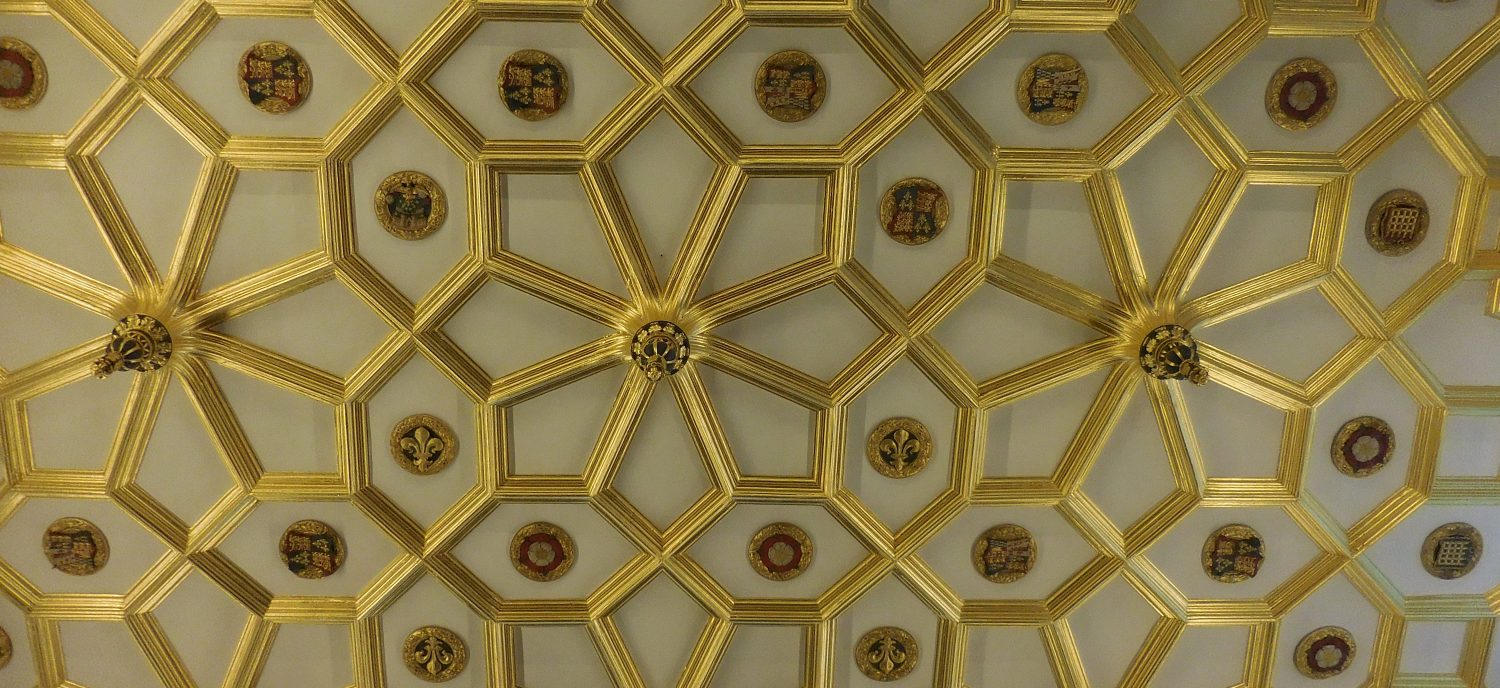Experts all agree that it is very difficult to list fully the houses of Henry VIII. Their number changed from year to year. He inherited many, acquired many more, sold or swapped or tore down others, and even built one or two originals. Generally, however, Henry liked to continue projects other people had begun. He spent fortunes on construction and embellishment (not to mention furnishings) for his residences, their gardens and facilities, which focused on sports, such as tennis, jousting, bowling, and hunting.
Henry traveled frequently from house to house (either his own or other people’s.) This was common practice for late medieval monarchs, as the huge entourages that surrounded the king (and the queen, and the royal children) needed constantly to shift from site to site to allow thorough cleaning and repairs in between periods of residence. His houses varied in size, as well. Only a few were large enough to lodge (and feed) the king, queen, and their attendant courtiers and servants. These sites were the palaces of Esher, Greenwich, Hampton Court, New Hall, Richmond, Woodstock and Whitehall. Henry of course owned many smaller sites too. Several were planned for specific usage (e.g. Nonsuch was built close to Hampton Court to accommodate the Prince of Wales.) Such usage could be flexible, however, as the king sometimes changed his mind, or pressed various residences into service when traveling or hunting with a small group of courtiers.
The houses listed on this site are buildings that Henry owned and visited (or likely visited; we recognize that the listing may be incomplete due to absence of records.) Sites like Maxstoke castle, which he briefly acquired after the attainder and execution of its owner, Edward Stafford, Duke of Buckingham, but never visited and gave to his courtier Sir William Compton, are not included. Fortifications without royal residential quarters, even when built by Henry, such as Pendennis castle in Cornwall, are likewise omitted.
The sites are color-coded to indicate, generally, the following methods of acquisition:
- Green: a property inherited when Henry came to the throne in 1509 (example, Richmond)
- Orange: a property taken from a suppressed monastery (example, Rochester)
- Purple: a property forcibly exchanged or a pressured sale (example: Knole)
- Red: a property taken by attainder (example, Whitehall)
- Brown: a property purchased, with no evidence of pressure, or inherited after Henry’s accession in 1509 (example: Ampthill)
- Blue: a property newly built (example: Nonsuch)
Each site has a short description providing basic information about the property, with focus on Henry VIII’s era. A separate bibliography with website links (and, where appropriate, a few images) is also provided for each. The interactive map allows the user to click on the site of the former house estate. Where the general estate footprint is known, the size/shape of the detailed view will make that information available. A circle indicates uncertainty as to the exact shape (or locale) of the property in question.
Click here to explore Henry VIII’s Houses
